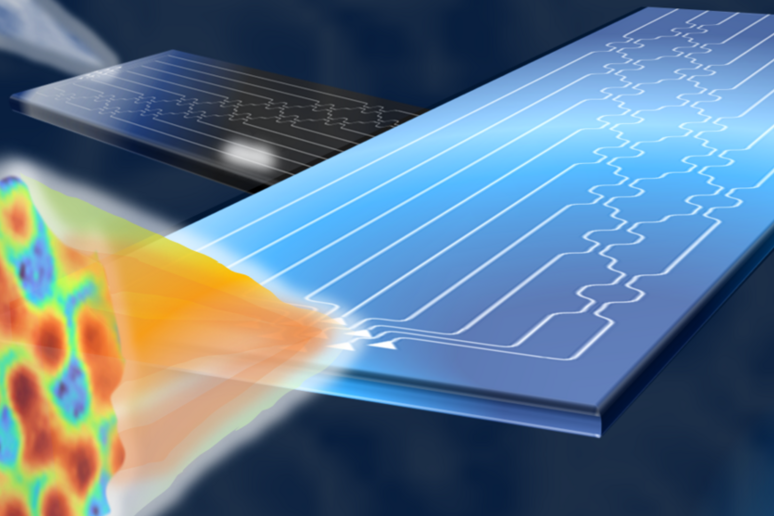A group of international researchers led by Milan Polytechnic and with contributions from the Scuola Superiore Sant'Anna in Pisa have developed a chip that makes calculations using light to establish what shape a beam of light must have in order to pass through an environment with maximum efficiency.
This is a key feature for next-generation optical wireless systems, which use beams of light to transport data streams.
The study, published in the journal Nature Photonics, is crucial for many future application scenarios: artificial intelligence, quantum computers, cryptography systems, advanced localisation, positioning and sensor systems, and in general in all systems that have to process very large amounts of data at very high speed.
Researchers led by SeyedMohammad SeyedinNavadeh have developed silicon chips that function as intelligent transceivers and, in pairs, can autonomously calculate the optimal shape of light to best pass through any environment.
The chips can also generate and direct many overlapping beams without them interfering with each other, greatly increasing the capacity for transmission.
“Our chips are mathematical processors that make calculations using light very quickly and efficiently, almost with no energy consumption,” said Francesco Morichetti of the Milan Polytechnic, co-author of the study. " This technology offers many advantages: extremely easy processing, high energy efficiency and an enormous bandwidth,” he added.
Riproduzione riservata © Copyright ANSA













